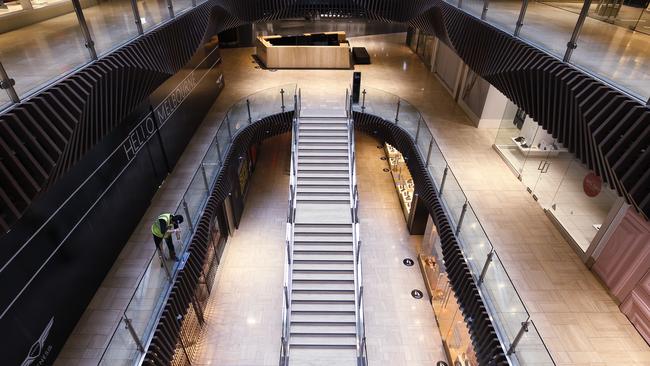COVID-19 recession: Mammoth spending fall drove GDP down
A massive fall in consumption was almost single-handedly responsible for Australia’s deepest economic contraction on record.

A massive fall in consumption was almost single-handedly responsible for Australia’s deepest economic contraction on record, as households proved unwilling or unable to spend a historic boost to social assistance payments through the depths of the COVID-19 recession.
The Australian Bureau of Statistics said a seasonally adjusted 12.1 per cent collapse in household consumption — another record — accounted for 95 per cent of the 7 per cent plunge in real GDP growth in the June quarter.
Over the year to June, consumption suffered its first annual fall, dropping 2.6 per cent.
The national accounts also revealed the scale and impact of the Morrison government’s cash splash, including the $750 welfare payment and the $550 JobSeeker coronavirus supplement.
COVID-19 stimulus measures boosted social assistance benefits by 42 per cent over the three months to more than $50bn, the ABS said, providing a 4.4-percentage-point boost to household disposable income.
This more than offset a 2.5 per cent drop in wages paid as hours worked fell an unprecedented 9.8 per cent in the quarter, leaving household gross disposable income up by 2.2 per cent through the worst quarterly economic contraction on record.
Social distancing measures limited people’s movements and shuttered businesses across the country through April and May, especially in the travel, hospitality and arts and recreation sectors.
A 17.6 per cent quarterly drop in spending on services explained the bulk of the overall drop in consumer spending, while consumption of goods fell 2.8 per cent as we stocked up on supermarket and household goods.
Spending on transport services, including air travel, collapsed by 88 per cent over the quarter as the aviation industry ground to a halt, pushing Virgin Australia into voluntary administration and triggering thousands of job losses at Qantas.
Spending on accommodation cratered by 77 per cent, and on recreational and arts services by 55 per cent.
In contrast, spending on home improvement and home offices lifted by 30 per cent over the quarter as Australians spent more time working from home during the initial phase of the pandemic.
Trading restrictions on pubs, bars and clubs drove an 18 per cent lift in the consumption of alcoholic drinks.
With incomes climbing alongside fewer opportunities or a lower willingness to spend, the household savings rate surged to 19.8 per cent, the highest level since 1974.
Including the cash from the government’s early release of super scheme, the savings ratio jumped to nearly 25 per cent — the highest on record. Without COVID-19-related government support payments, and assuming the same pattern of spending, the household saving ratio would have been 4.6 per cent.
Josh Frydenberg on Wednesday said he wouldn’t tell Australians how to spend their money but confidence would be key to getting consumers and businesses spending again, without which the economy would struggle.
Up-to-date bank card spending data suggests consumption regained pre-COVID levels by August, aside from a steep drop in Victoria.




To join the conversation, please log in. Don't have an account? Register
Join the conversation, you are commenting as Logout